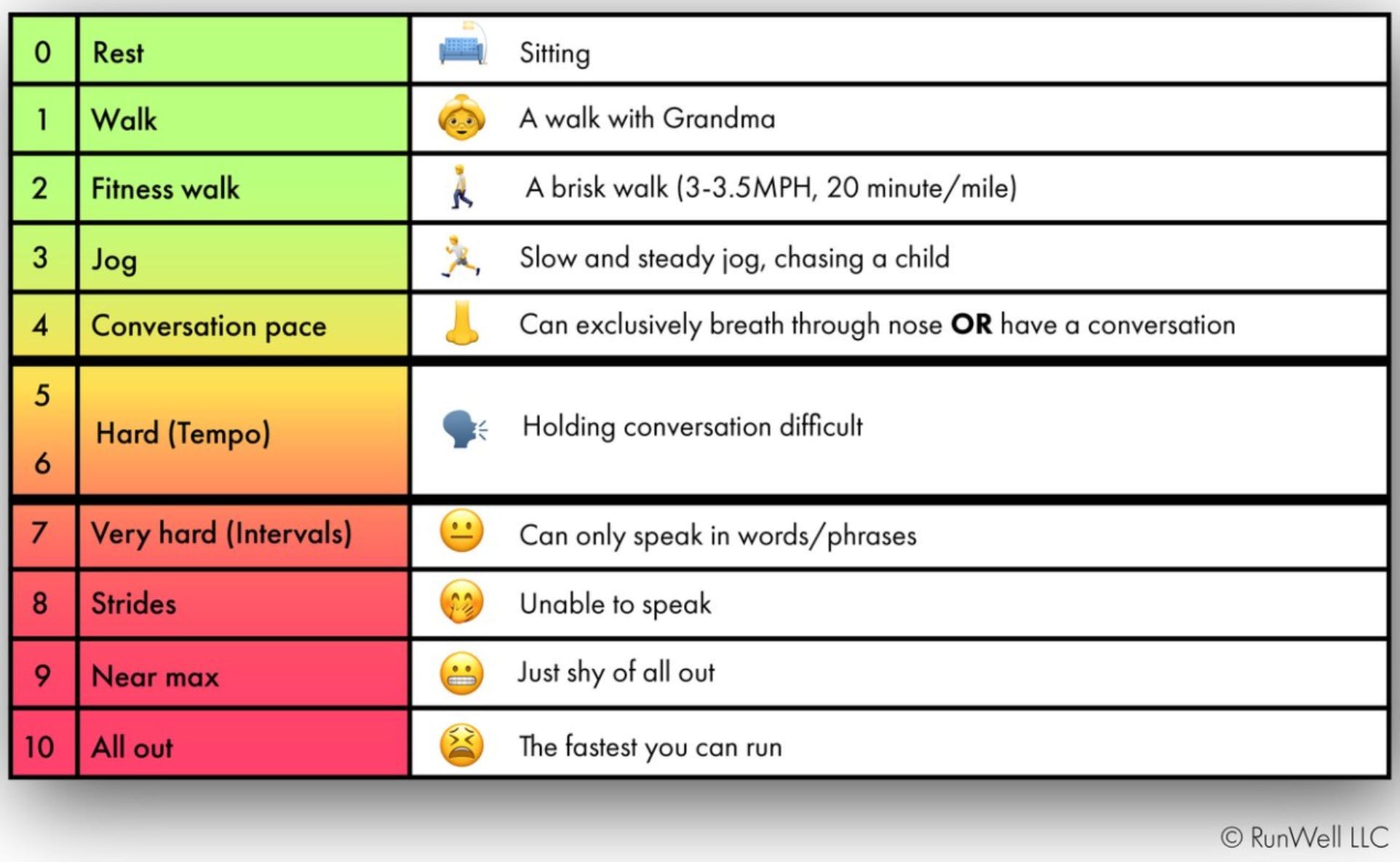There are so many different ways to train for an endurance event. I have seen it all, from the person who signs up for a marathon 6 weeks in advance (my crazy father-in-law), to the person who has 3 watches, a heart rate monitor, and would bring along a laptop if that helped gather more Data.
What I have ultimately figured out for myself is that I am a good soldier. Tell me what do to, and I will get it done, whether that is from a program that I have made on my own, or from a coach (shout out to my swimming and rowing coaches). But don’t ask me to track anything.
Since working with this new coach, Chris Johnson, I have adopted his use of training via my Rate of Perceived Exertion (RPE).
How do I know what RPE I am working at?
This chart has become near and dear to my heart as this is what my coach, Chris Johnson, uses for his athletes. I find that Chris has made the numbers correspond to a pace that I can understand.
What does RPE training look like?
An example of my run this morning: 10 minutes at RPE 2, 10 minutes at RPE 3, and 50 minutes at RPE 4.
Remember this post from June? That’s the argument for RPE 2.
Since my kids are currently 8 and 11 and officially faster than me, I think of RPE 3 a little differently: what it was like to chase my 8 year-old when he was 2…
Now THOSE are runner’s legs!
A late March run… taken some time around 5:27am
Chris asks that RPE 4 be at a conversational pace. Since I run before the roosters wake up, I am often running alone. I will breathe exclusively through my nose when on a flat stretch to make sure I am at the right pace.
The takeaway from this is that RPE running is kind of nice… I am not always looking at my watch to see my pace, just feeling how my body is doing. Admittedly, I am sure the anxiety of making sure I have the right race pace set up will come as I get closer to the Big Day. But for now, I’ll try to relax and breathe through my nose.



